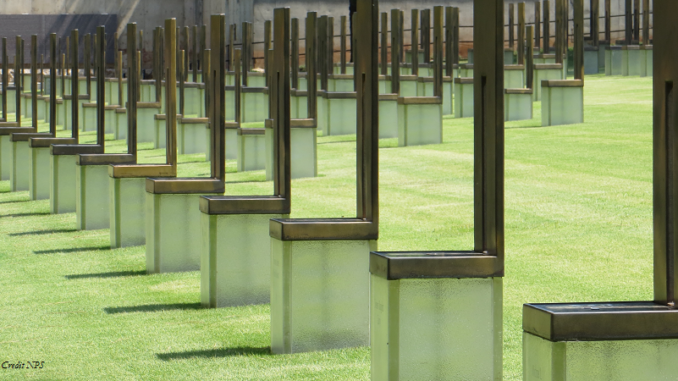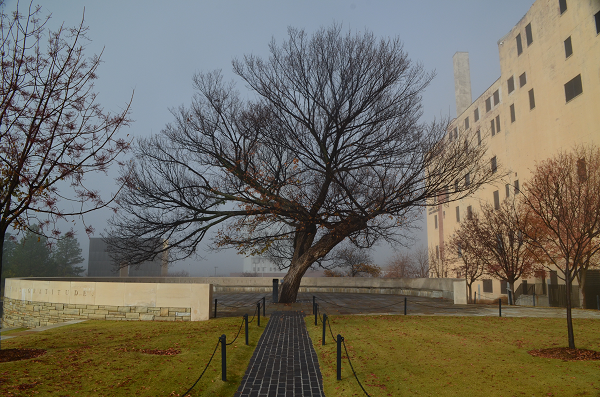
On April 19, 1995 the Afred E. Murrah Federal Building in downtown Oklahoma City, Oklahoma was destroyed by a homemade bomb. The bomb was set off by Timothy McVeigh, who at 9:01 am drove a rented moving truck and parked it in front of the building’s main entrance before creating the detonation.
The bomb exploded at 9:02 am, just as the workday was beginning in the Murrah Building. The resulting destruction collapsed the front outer wall of the structure and caused several of the floors in the six story building to collapse downward. Because there was no warning and no established security for such as event, 168 people inside the building were killed and many others were injured. Among those 168 killed were nineteen children in a first floor daycare facility within the Murrah Building.
Domestic Terrorists Exposed
Before the events of September 11, 2001, the surprise attack in Oklahoma City was the most shocking terrorist attack on the United States in modern history. After a federal investigation was completed, Timothy McVeigh and his friend Terry Nichols were found guilty of planning the bombing and carrying it out. These men were motivated by their anger toward and mistrust of the federal government. McVeigh and Nichols believed the national government was growing too large and becoming too powerful. They were angry about federal taxes and laws passed against gun ownership. Rather than use their protected right to express their disagreement in peaceful protest or political activity, McVeigh and Nichols chose violence. Nichols helped purchase and construct the homemade bomb that McVeigh detonated. Nichols was sentenced to life in prison. McVeigh was put to death through lethal injection in June 2001.

A Shocking Wake Up Call
As a result of the terrible events in Oklahoma City, President Bill Clinton and Congress made changes to improve safety around federal government buildings. As one example, Pennsylvania Avenue–the street that runs in front of the White House–was closed to automobile traffic soon after the events of April 19, 1995. It remains that way today, to prevent dangerous vehicles such as McVeigh’s truck bomb from getting too close. Concrete barriers have also been erected in front of many other existing federal buildings to serve as vehicle barriers. And newer federal buildings that have been built since the Oklahoma City bombing have been designed with tighter security and safety in mind.
We Will Never Forget
The theme for the twentieth anniversary of the Oklahoma City tragedy is “We Will Never Forget.” Certainly, the people and families directly affected by the loss that occurred on April 19, 1995 will not forget. And the community of Oklahoma City will not forget how it was changed on that day two decades ago. The challenge of 2015 is to prevent the events of that day from simply becoming history. This anniversary remembrance is not only a time to remember victims, but to understand why the events occurred.
Studying history should be an act of understanding and a way of determining why people chose to do things–to understand what they hoped to accomplish. The tragedy of Oklahoma City can help our nation learn better ways to identify the angry and suspicious–people who are so afraid that they take extreme measures in order to shock others. How can our democratic society balance the need for safety alongside the freedom of individual choice?
Related Links
To learn more about the events of the Oklahoma City bombing and to see the grounds of the Memorial and Museum site, watch the video tour provided below.
To learn more about the efforts of the organizers and custodians of the Oklahoma City National Memorial and Museum, visit their Web site, especially to learn more about the educational efforts supported through the memorial and museum staff.
